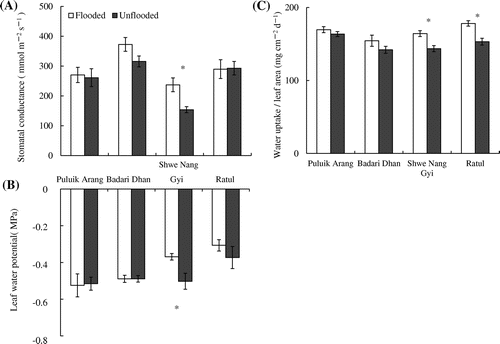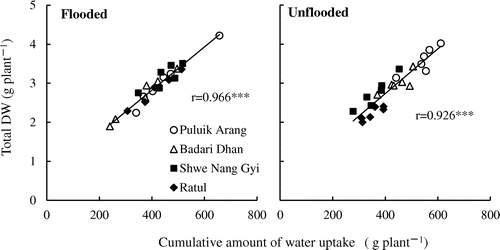Figures & data
Table 1. Shoot dry weight and shoot morphological traits of four rice cultivars subjected to flooded and unflooded conditions.
Table 2. Root dry weight and root morphological traits of four rice cultivars subjected to flooded and unflooded conditions.
Figure 1. Stomatal conductance (A), LWP (B) of the fully expanded highest leaf and water uptake per unit leaf area (C) grown under different soil moisture regimes. Water uptake / leaf area were calculated dividing the daily amount of water uptake by the leaf area measured at 3 weeks after treatment (n = 6). The stomatal conductance (n = 5) and the LWP (n = 3) were measured of the fully expanded highest leaf, using a different plant. Vertical bars indicate the standard error. * indicate significant difference between flooded and unflooded conditions at p < 0.05 according to t-test.

Figure 2. Cumulative amount water uptake of four rice cultivars under flooded and unflooded conditions. Vertical bars indicate the standard error of six replicates of the amount of water-uptake from different plants. Bars followed by different letters are significantly different according to Tukey’s test at p < 0.05. Levels of significance: ** significant at p < 0.01, n.s. = not significant.

Figure3. Relationships between the cumulative amount of water uptake and total DW among four rice cultivars. Diagonal lines indicate regressions for all values of each soil water regimes. Levels of significance: *** significant at p < 0.001.
